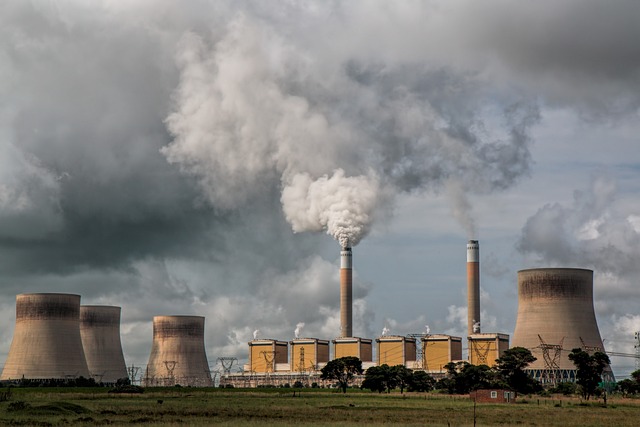Environmental Issues In India and Its solution
India faces many environmental issues, including:
Air Pollution
Air pollution in India is a serious environmental issue. According to the World Air Quality Index (WAQI), India has the worst air quality in the world, with 21 of the 30 most polluted cities located in the country.
The main sources of air pollution in India are:
Industry: India is a rapidly industrializing country, and its industries emit a significant amount of pollutants into the air.
Vehicles: India has a large and growing number of vehicles on the road, which contribute to air pollution through exhaust emissions.
Crop burning: Farmers in India often burn crop residues after harvest to clear their fields, which releases pollutants into the air.
Air pollution has a significant impact on human health. It is estimated that air pollution causes over 2 million deaths in India each year. Air pollution can also cause a variety of other health problems, including respiratory infections, heart disease, and cancer.
The Indian government has taken a number of steps to address air pollution, including:
- Setting stricter emissions standards for industry and vehicles.
- Promoting the use of cleaner fuels.
- Investing in public transportation.
- Planting trees and other vegetation.
However, more needs to be done to reduce air pollution in India. The government, businesses, and individuals all have a role to play in improving air quality.
Here are some things that individuals can do to reduce their exposure to air pollution:
Avoid spending time outdoors on days when air pollution levels are high.
Wear a mask when spending time outdoors.
Use air purifiers in your home and office.
Reduce your reliance on vehicles by using public transportation, walking, or biking.
Avoid burning household waste.
By taking these steps, we can all help to improve air quality in India and protect our health.
Water Pollution
Water pollution is a major environmental issue in India. According to a 2019 report by the Central Pollution Control Board (CPCB), 70% of India’s surface water is polluted.
The main sources of water pollution in India are:
Untreated sewage: India generates over 60 billion liters of sewage per day, but only a fraction of it is treated. Most of the untreated sewage is dumped into rivers and lakes, polluting the water.
Agricultural runoff: Agricultural runoff from farms contains pesticides, fertilizers, and other chemicals that can pollute water sources.
Industrial waste: Many industries in India do not properly treat their wastewater before discharging it into the environment. This can lead to the contamination of water bodies with heavy metals, toxic chemicals, and other pollutants.
Solid waste: Solid waste that is not properly disposed of can also pollute water bodies. For example, rainwater runoff from garbage dumps can carry pollutants into rivers and lakes.
Water pollution has a significant impact on human health. It is estimated that waterborne diseases cause over 1 million deaths in India each year. Water pollution can also cause a variety of other health problems, including diarrhea, cholera, typhoid, and hepatitis A.
The Indian government has taken a number of steps to address water pollution, including:
Investing in sewage treatment plants.
Enacting stricter pollution control standards for industries.
Promoting water conservation practices.
Launching public awareness campaigns.
However, more needs to be done to reduce water pollution in India. The government, businesses, and individuals all have a role to play in protecting our water resources.
Here are some things that individuals can do to reduce water pollution:
Conserve water by taking shorter showers, fixing leaky faucets, and watering lawns less often.
Avoid using pesticides and herbicides on your lawn and garden.
Dispose of household hazardous waste properly.
Support businesses and organizations that are working to reduce water pollution.
By taking these steps, we can all help to improve water quality in India and protect our health.
Solid Waste Pollution
Solid waste pollution is a major environmental problem in India. According to the Central Pollution Control Board (CPCB), India generates over 400 million tonnes of solid waste per year, of which only 60% is collected and treated. The rest of the waste is either dumped in open landfills or burned, which releases harmful pollutants into the air and water.
There are a number of factors contributing to solid waste pollution in India, including rapid urbanization, population growth, and changing consumption patterns. The growing urban population is generating more waste, and the city infrastructure is often struggling to keep up. Additionally, India’s rising middle class is consuming more goods, which is also leading to an increase in waste generation.
The consequences of solid waste pollution are severe. It can contaminate soil and water resources, spread diseases, and create unsightly conditions. It can also lead to respiratory problems, allergies, and other health issues.
There are a number of things that can be done to address solid waste pollution in India. These include:
Improving waste collection and treatment infrastructure
Promoting waste reduction and recycling
Raising awareness about the problem of solid waste pollution
The government of India is taking steps to address the problem of solid waste pollution. In 2016, it launched the Swachh Bharat Abhiyan (Clean India Mission), a nationwide campaign to improve sanitation and cleanliness. The mission has made significant progress in reducing open defecation, but more needs to be done to address the problem of solid waste pollution.
Here are some additional things that can be done to reduce solid waste pollution in India:
Reduce the use of disposable products
Compost food scraps and yard waste
Donate or recycle unwanted items
Support businesses that are committed to sustainability
By taking these steps, we can help to reduce solid waste pollution and create a cleaner and healthier environment for all.
Deforestation Issue
Deforestation is a major environmental issue in India. According to a 2023 report by UK-based Utility Bidder, India ranked second in the world for deforestation between 1990 and 2020, losing 668,400 hectares of forest cover. This is a significant increase from the 384,000 hectares of forest cover lost between 1990 and 2000.
There are a number of factors driving deforestation in India, including:
Agricultural expansion: India has a large and growing population, and there is a constant need for more land to produce food. This has led to the clearing of forests for agriculture.
The impacts of deforestation in India are far-reaching. Deforestation contributes to climate change by releasing carbon dioxide into the atmosphere. It also leads to soil erosion, water scarcity, and biodiversity loss. Deforestation also has a negative impact on the livelihoods of people who depend on forests for their food, income, and medicine.
The Indian government is aware of the deforestation problem, and it has taken a number of steps to address it. These include:
Enacting laws to protect forests: The government has enacted a number of laws to protect forests, such as the Forest Conservation Act of 1980. These laws regulate the clearing of forests and require the government to compensate for any forest land that is lost.
Launching afforestation programs: The government has launched a number of afforestation programs to plant trees and restore degraded forests. These programs have been successful in increasing forest cover in some parts of the country.
Working with communities: The government is working with communities to reduce their reliance on forests for fuelwood and other resources. This is being done through programs that provide alternative energy sources and livelihood opportunities.
Despite these efforts, deforestation remains a major problem in India. It is important to continue to raise awareness of the issue and to support efforts to protect and restore India’s forests.
Here are some things that individuals can do to help reduce deforestation in India:
Reduce their consumption of paper and wood products.
Buy products from sustainable sources.
Support organizations that are working to protect forests in India.
Plant trees in their own communities.
Climate Change
Climate change is a major problem in India, and it is expected to have a significant impact on the country’s economy, society, and environment in the coming years.
India is already experiencing a number of the impacts of climate change, including:
More extreme weather events: India is experiencing more frequent and intense heat waves, droughts, floods, and cyclones due to climate change. These events are causing widespread damage to property and infrastructure, and they are also leading to loss of life and livelihoods.
Rising sea levels: Sea levels are rising due to climate change, and this is inundating coastal areas and displacing communities. Sea level rise is also threatening India’s food security, as it is salinizing agricultural land.
Water scarcity: Climate change is leading to water scarcity in India, as it is reducing rainfall and increasing evaporation. This is putting a strain on India’s water resources and making it difficult to meet the needs of the country’s growing population.
Impacts on agriculture: Climate change is having a negative impact on agriculture in India. Rising temperatures and changes in rainfall patterns are making it difficult to grow crops, and pests and diseases are becoming more prevalent. This is leading to reduced crop yields and increased food prices.
The Indian government is aware of the climate change problem, and it has taken a number of steps to address it. These include:
Setting ambitious renewable energy targets: India has set ambitious targets for renewable energy deployment. The country aims to install 500 GW of renewable energy capacity by 2030.
Promoting energy efficiency: The government is promoting energy efficiency in all sectors of the economy. This includes measures such as improving the energy efficiency of buildings and appliances, and promoting public transportation.
Investing in climate adaptation measures: The government is investing in climate adaptation measures to help communities cope with the impacts of climate change. This includes measures such as building flood protection infrastructure and developing drought-resistant crops.
Despite these efforts, the climate change problem in India is significant. It is important to continue to raise awareness of the issue and to support efforts to reduce greenhouse gas emissions and adapt to the impacts of climate change.
Here are some things that individuals can do to help reduce the climate change problem in India:
Reduce their own carbon footprint by, for example, driving less, using less energy at home, and eating less meat.
Support organizations that are working to address climate change in India.
Advocate for government policies that support climate action.









